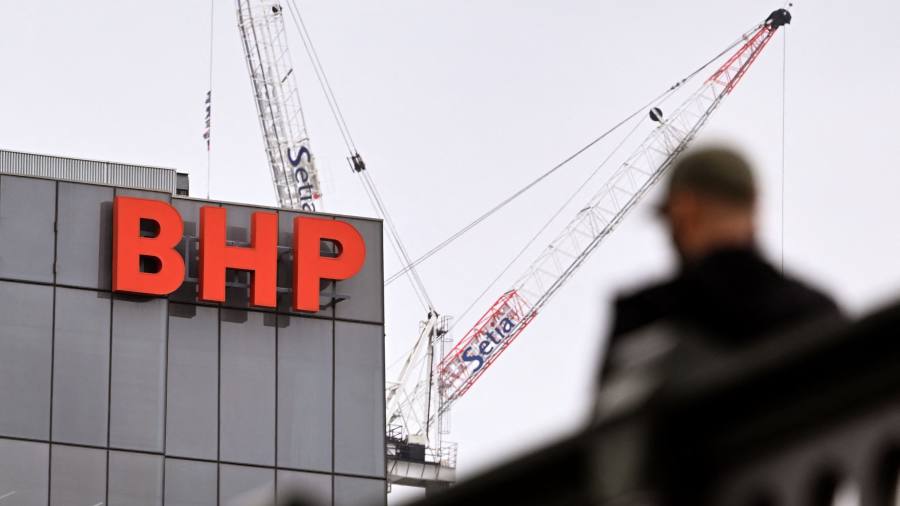Receive free BHP Group PLC updates
We’ll send you a myFT Daily Digest email rounding up the latest BHP Group PLC news every morning.
BHP reported its lowest annual profit in three years as the world’s biggest miner by market capitalisation warned its prospects hinged on China’s efforts to revive its property sector and the severity of any steel production cuts by Beijing.
The Australian group, which has a heavy reliance on Chinese construction demand for steel made from its iron ore, said underlying profits for its year to the end of June were $13.4bn, down 37 per cent from the $21.3bn recorded a year earlier. BHP cut its dividend by almost half to $1.70, down from $3.25 the year before.
China, the world’s second-largest economy, is struggling to regain momentum as it grapples with a slowdown in the property sector, high youth unemployment and deflation. Its lacklustre growth is clouding the outlook for the big mining groups, which had posted record high earnings in recent years helped by soaring commodity prices. BHP said lower prices across major commodities and the effect of inflation, particularly on labour, diesel and electricity prices, were now putting pressure on profits.
“Commodity demand has remained relatively robust in China and India even as developed world economies have slowed substantially,” said chief executive Mike Henry, adding “in the near term, China’s trajectory is contingent on the effectiveness of recent policy measures”.
BHP said there were two key uncertainties for its outlook on iron ore, its biggest source of earnings.
“The first is how effectively China’s stimulus policy is implemented, especially with regards to real estate,” said BHP in its presentation. “The second revolves around the breadth, timing and severity of any mandated steel production cuts.” In the past, China has introduced steel production curbs with the goal of reducing oversupply.
Henry said on a media call that demand from China nonetheless remained “reasonably healthy”, as sectors including carmaking and green technology thrived. He said the effect of Chinese government stimulus activity in the property market would spur demand for iron ore in the latter part of 2023 and into 2024, if successful.
Analysts at Australian bank CBA have predicted the iron ore price will continue to decline from its latest March peak as a worsening outlook for Chinese property weighs on the commodity, and as stimulus measures take time to lift consumer confidence.
India remains a bright spot for global demand. Government plans to increase its steel output are a boon for demand for the Australian company’s coking coal, which fuels blast furnaces.
“We expect buoyant growth in India with strong construction activity underpinning an expansion in steelmaking capacity,” Henry said.
BHP is the latest mining company to reduce its dividend, though the payout was still the third largest dividend in its history.
Analysts at bank RBC said an increase in BHP’s capital expenditure forecast for the current year to $10bn was “much higher” than expected.
Henry said the rise from $7.1bn in 2022-23 reflected the company’s strategy to “invest in growth” through potash and copper — boosted by its takeover of Oz Minerals this year — in order to generate more cash.
Read the full article here



